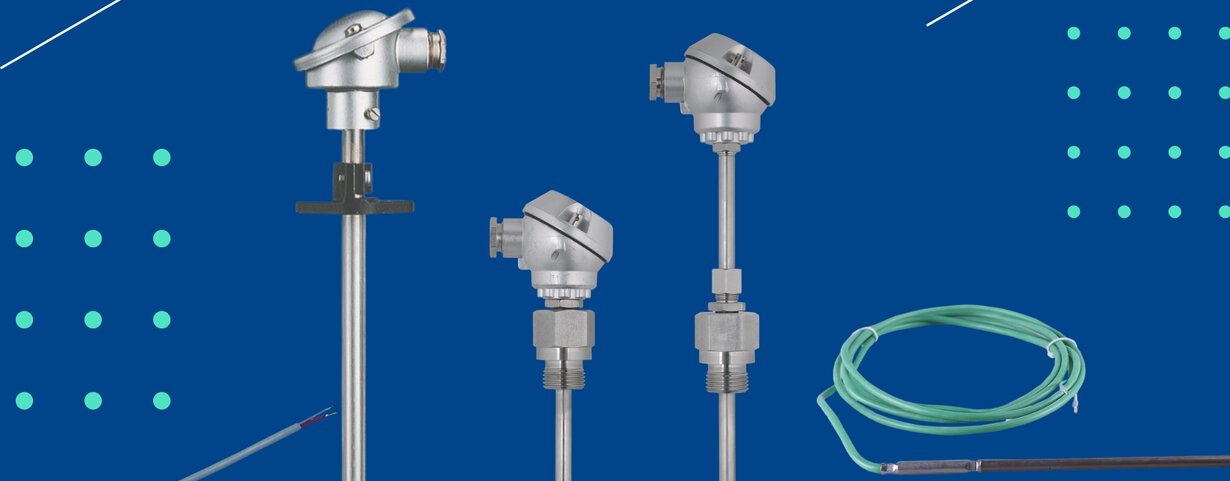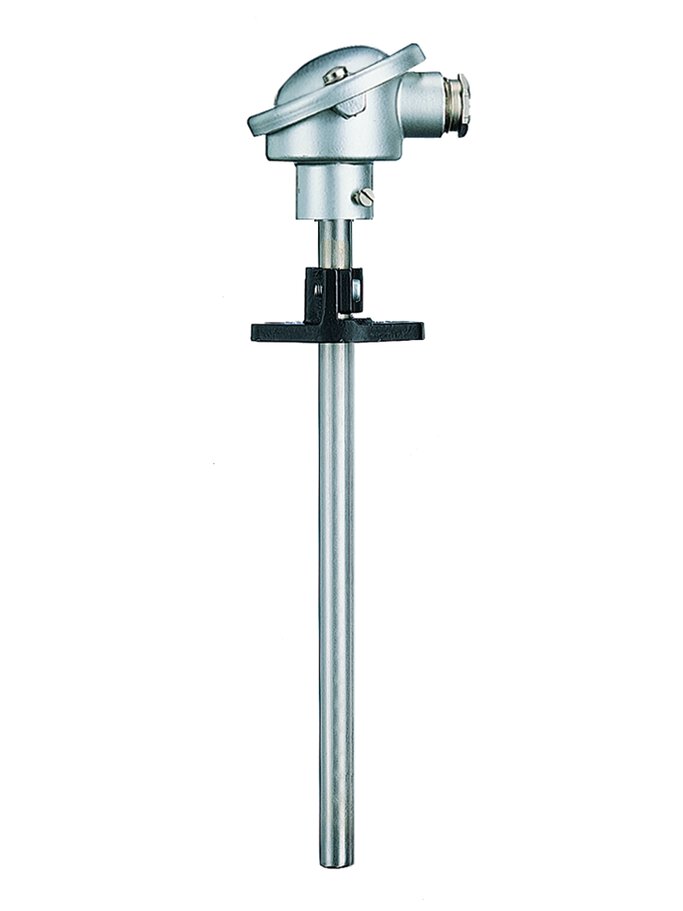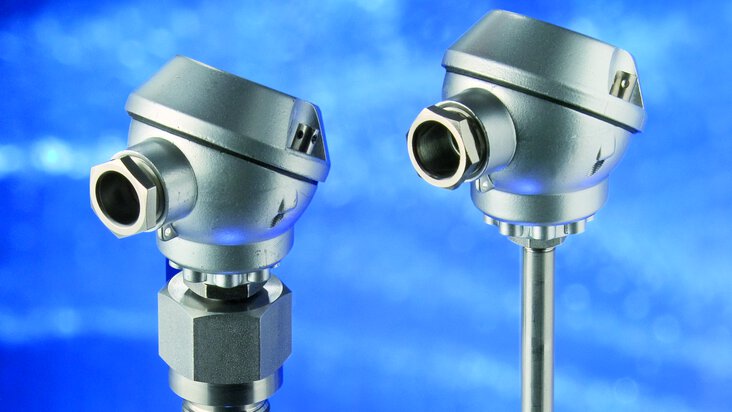

Type J thermocouple – characteristics, applications
The J-type thermocouple is one of the most widely used thermocouple types, due to its general purpose and low price. What are their advantages and disadvantages? For which applications will they work best? How does it differ from the equally popular K-type thermocouple?
Principle of operation of thermocouples
The principle of the thermocouple is that when two different conductors or semiconductors A and B form a circuit and their two ends are connected together, as long as the temperature at the two contacts is different (the working end and the control end called cold), the loop will generate an electromotive force. Its direction and magnitude are related to the conductor material and the temperature of the two contacts. This phenomenon is called the thermoelectric effect and a circuit consisting of two conductors is called a thermocouple.
J-type thermocouple sensor – what is it?
In J-type thermocouples, the positive leg consists of iron and the negative leg consists of a mixture of copper (55%) and nickel (45%), which is known as an alloy called konstan.
J type thermocouple – temperature range
Type J thermocouple probe are suitable for a wide temperature range of -40°C to 750°C. The upper limit is the maximum continuous operating temperature, but temperatures as high as 1,000°C can be operated in short-term use. The minimum temperature is -40, but beware of condensation when working at low temperatures - it can lead to rusting of the iron arm.
Type J thermocouple – accuracy
They provide an accurate measurement and have a sensitivity of 55μV/℃, making them an ideal choice for most plastics processing, among other applications.
Type J thermocouple – colours
This type of thermocouple, according to DIN EN 60584, has the positive arm in black and the negative arm in white.

Push-in thermocouple type J

Sheathed thermocouple type J

Temperature range of different types of thermocouples – table
What is the J-type thermocouple used for?
J-type thermocouple temperature sensors are commonly used to measure temperature in a variety of applications, particularly in reducing atmosphere and vacuum applications. It is one of the few thermocouples that can be safely used in reducing atmospheres (i.e. atmospheres in which there is a lack of oxygen but reducing gases such as hydrogen and carbon monoxide are present) such as in industrial furnaces.
Type J thermocouples and their industrial applications
Due to their high sensitivity and wide range of measured temperatures, thermocouples type J are a good choice for the plastics industry, including medical products, as well as for the heat treatment of aluminium, the curing of composites, the production and development of chemicals and paints and for testing electronics.
Type J thermocouple sensors – limitations
This type of thermocouple, due to the presence of iron, is susceptible to oxidation, so we do not recommend using it for temperature measurements in humid conditions.
It should also not be used for high temperatures above 750°C in oxidising atmospheres, because under such conditions the iron undergoes a molecular transformation and permanently loses its standard output voltage. It is not possible to recover it even after the iron has cooled down.
This temperature sensor will also not perform well in an atmosphere with a high sulphur content, as this would cause it to degrade rapidly.
J-type vs K-type thermocouple – which one is more sensitive? Similarities and differences
J-type thermocouple sensors have similar measurement accuracy to K-type thermocouples. J-type thermocouples have a more limited temperature range (from -40°C to +750°C) than the K-type used in the -200 to +1200°C temperature range, but higher sensitivity - around 50 µV/°C compared to 41µV/°C.
In addition, Type K thermocouples, due to their material (NiCr-Ni alloy), are more resistant to ultra-oxidation and acidity. Another advantage is their affordable price - the lowest of all types of thermoelectric sensors.
- ${title}${badge}


